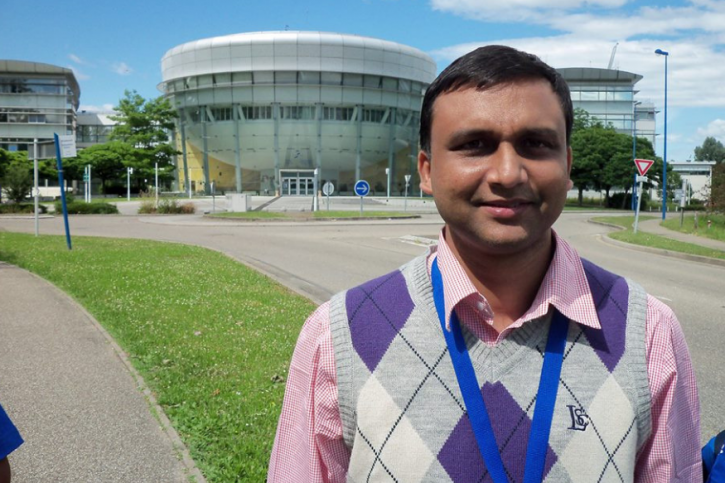No products in the cart.
Story of Farmer’s Son who helped India successfully launch Chandrayaan-2
India’s significant mission Chandrayaan-II has been successfully launched at its second attempt itself without any setbacks, just like the ISRO chief Dr K Sivan promised and one among the members of the great team that made this possible is Chandrakanta, a scientist, who wrote a success story for himself in his new chapter of his book.
Let’s learn about the inspirational story of Chandrakanta, hailing from a humble background who went on to become a renowned scientist the world knows about.

Mudhusudhan Kumar, a farmer in Hoogly’s Shibpur Village wanted to name his son ‘Suryakanta’, but the kid’s teacher advised otherwise and so he was named Chandrakanta.
For the unversed, Chandrakanta in English means ‘moon child’ and so was his destiny that he had finally become a senior scientist of Indian Space Research Organisation (ISRO). Talk about success! Today, he was one of those important members who spearheaded the Chandrayaan-2 mission.
Talking to News18 about the delay of the mission, Chandrakanta’s father said, “When the mission was aborted, we were sad. But we are prepared to witness India’s most challenging moon mission lift up. We are extremely proud and happy that our son is part of the team that will make this happen.”
Chandrakanta is the main man behind the antenna systems’ design for the Indian satellites including ground stations.
He has been highly involved in earlier space missions like for Chandrayaan-1, ASTROSAT and GSAT-12. For Chandrayaan-2, he was the Deputy Project Director who was responsible for the RF system. He is also the man responsible for leading ‘Electromagnetics’ Section of UR Rao Satellite Centre (URSC).
Chandrakanta’s mother told News18, “My son called me in the morning and told me to watch Chandrayaan-2 mission on TV. I am very happy today and proud of my son. Despite all odds, he managed to overcome hurdles and became a scientist.”
Quite interestingly, Chandrakanta’s younger brother is named ‘Sashikant’ – after the moon – and even he is a scientist.
Chandrayaan-II mission was launched onboard by the Indian space agency ISRO on its most powerful launcher GSLV-Mk III, from Satish Dhawan Space Centre in Andhra Pradesh’s Sriharikota at 2:43 PM on Monday.
India became the fourth country to launch a mission after the US, Russia, and China that would land on the moon and the very first country to land on and explore its south pole region, Chandrayaan-2, was called off from launch just 56 minutes before its scheduled liftoff on July 15 because of a technical snag in the GSLV Mark-III rocket launcher.
In fact, this is India’s second trip to the moon and the first probe, Chandrayaan 1, that was launched in October 2008, made India the first country in the world to complete a successful moon landing in the maiden attempt.
The Chandrayaan 1 was so significant as it discovered water on the moon’s surface, and with the second launch, India now aims to take its mission to a whole new level by landing its probe on a far side of the moon












